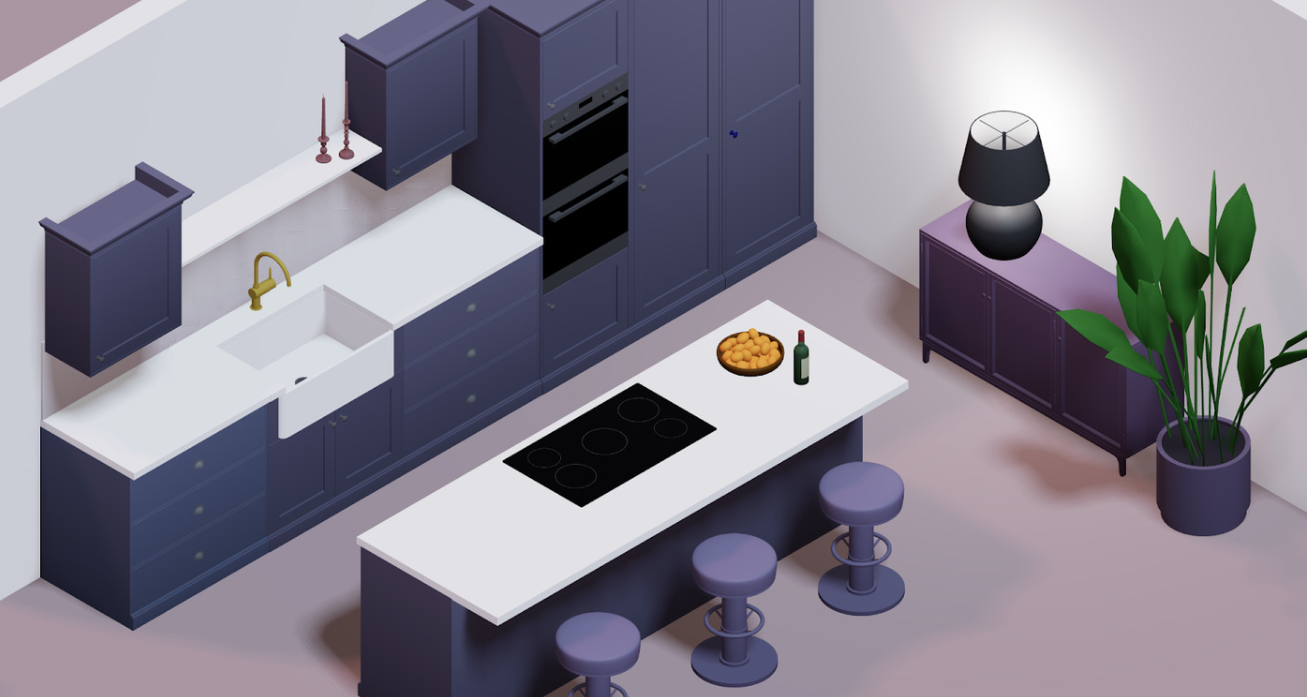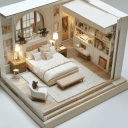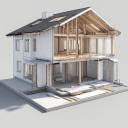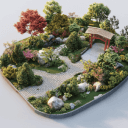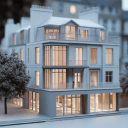Arcadium 3D provides powerful 3D tools for designing kitchens that dazzle buyers. As a professional 3D kitchen designer, I’ve seen firsthand how a well-planned island can transform a space – and a sale. Industry experts confirm that adding a kitchen island with seating is one of the highest-ROI upgrades you can make.
In fact, 78% of buyers now expect an eat-in kitchen with an island or table space. With Arcadium’s intuitive platform, anyone – designer or homeowner – can draft an island layout that maximises both form and function.
For example, Arcadium’s browser-based planner generates detailed isometric designs (see image below), helping clients instantly see how a new island anchors the kitchen’s layout.
A 3D isometric view of a modern kitchen island. Arcadium’s online design tool can create visuals like this to showcase island layouts that become the heart of the home.
Explore Our Kitchen Design Tool
Why Kitchen Islands Are a Must-Have for Buyers
Modern homebuyers view the kitchen island as more than extra counter space – it’s a social and functional centerpiece. Real estate advisors note that one of the highest-return upgrades is adding an island with seating.
It provides a casual dining spot and makes the kitchen a gathering place. As Kourtney Pulitzer of Sotheby’s notes, “People really love being able to spend time in the kitchen, which is often the heart of a home”. In fact, research shows 78% of buyers look for eat-in kitchens with islands or ample counter seating.
High ROI:
Designers report that a well-designed island can boost home value by up to 10%. It not only looks luxurious but also packs a functional punch (extra storage, workspace, and seating).
Multi-use Hub:
Islands serve as prep areas, homework nooks, or casual bars. This versatility appeals to families. As one industry report found, eat-in kitchens “are a space not just for eating, but also for doing homework, crafting, and helping with food prep”.
Visual Impact:
A stylish island can modernize an older kitchen, unify the design, and give the room a focal point. It draws the eye to carefully chosen finishes and textures (like a striking countertop or decorative base).
Gathering Space:
With additional bar stools or benches, islands enable guests to chat with the cook. In open-plan homes, they bridge the kitchen and living areas, making the kitchen feel like a natural entertainment zone.
By incorporating these elements, an island layout sells – it turns a simple kitchen into an inviting lifestyle space. But to hit these notes, the layout must be right. That’s where smart planning comes in.
Planning the Perfect Island Layout
A great island isn’t just an afterthought; it’s carefully placed for comfort and efficiency. When I draft layouts in
Arcadium 3D
, I follow classic kitchen design principles. First, ensure walkways and workflow. You want at least 3 feet of clearance on all sides of the island so people can move freely. In Arcadium, its space-planning tools let me fine-tune those distances in both 2D and 3D views.
For example, I always keep the work triangle in mind (the path between sink, stove and refrigerator). Arcadium’s interface makes this easy: I can drag appliances and see their positions instantly, confirming that the triangle remains tight. As Arcadium explains, its kitchen ergonomics support means you can “incorporate the kitchen work triangle principle, ensuring that the sink, stove, and refrigerator are well placed”. This attention to layout can even save up to 60% of prep time for the homeowner.
In large open-plan kitchens, I sometimes add double islands for a luxury look. Even high-end realtors note that a second island is a “popular luxury option” that really wows buyers. Arcadium lets me experiment with two islands in minutes, adjusting sizes so both fit comfortably.
Once the function is set, style matters. I use Arcadium’s material library to select on-trend surfaces. For example, I try quartz countertops and contrast them with wood or painted cabinetry. Arcadium supports this too: you can “experiment with various cabinet styles, countertops, and appliances, ensuring that every inch of space is utilized effectively”.
Light also plays a role: good lighting “makes or breaks a kitchen design”. In Arcadium, I add ceiling lights and pendants around the island to preview how bright it will be. A brightly lit island looks inviting in renderings, and buyers take notice of that.
By carefully planning size, position, and style, you ensure the island enhances the home. Arcadium’s 3D preview lets you test multiple versions quickly. One advantage is seeing instantly “how rearranging cabinets or altering the position of your appliances affects the overall flow”. This virtual trial-and-error means no surprises later – you’ve found the sweet spot before construction starts.
Designing and Visualising with Arcadium 3D
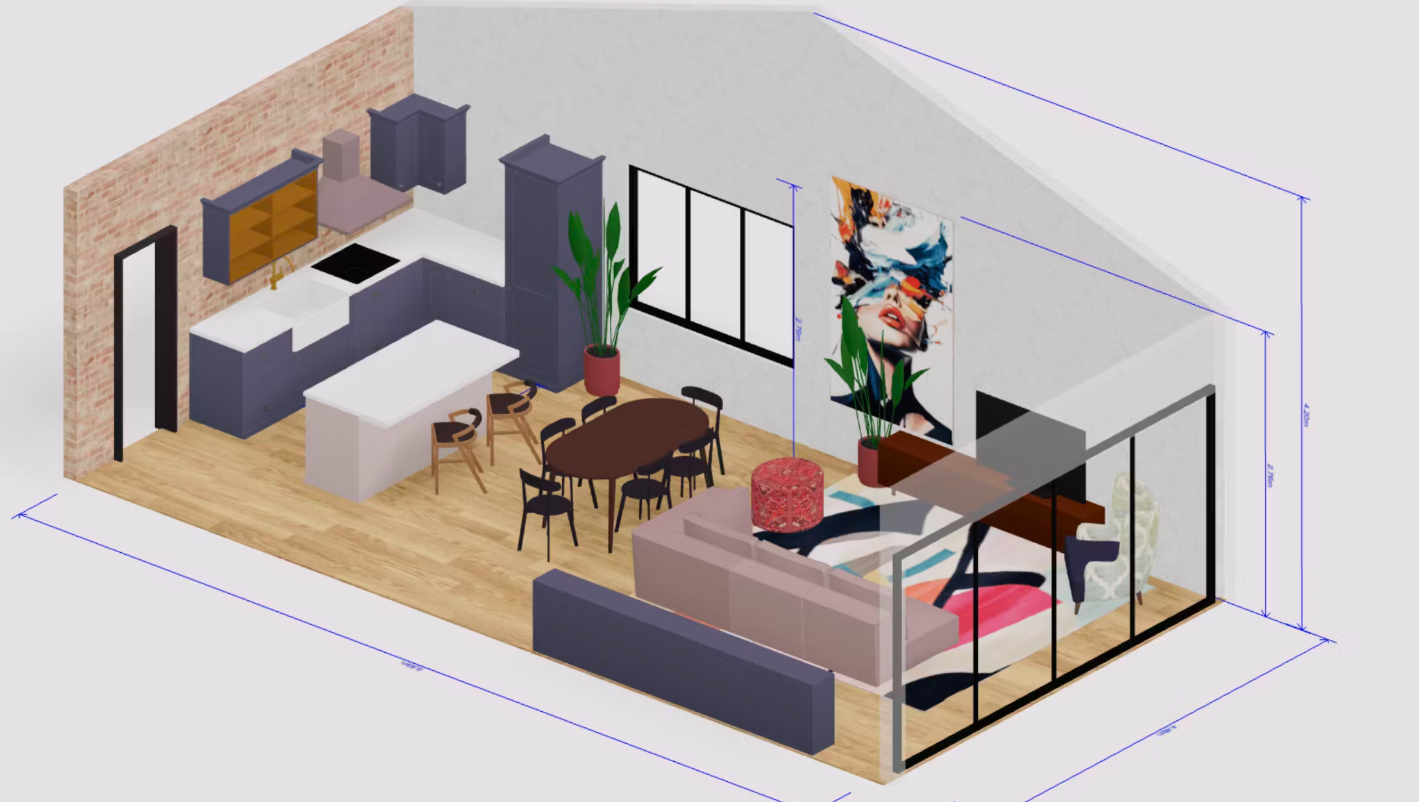
To actually build your island concept, Arcadium 3D is my go-to tool. It’s a completely browser-based free platform – no downloads, no plugins – so even clients can try it themselves. In fact, Arcadium’s online kitchen planner is one of the top-rated free design tools on the market.
Its drag-and-drop interface works in any modern browser, making kitchen layout fun and fast. (Yes, it’s really
free kitchen design software
– you can experiment with materials, lighting and layouts without paying a dime.) I often highlight Arcadium’s key advantages to clients:
All-in-One 3D Platform:
Arcadium “includes an in-built furniture library, dynamic parametric components, alignment tools, instant rendering, precise measurements” and more. In practice, this means I can place an island unit from the catalog, stretch it to the exact dimensions, and immediately see it in 3D. No manual scaling or fiddling.
Extensive Component Library:
It offers thousands of kitchen items – cabinets, appliances, fixtures and decor. Competitors often have limited catalogs, but Arcadium “boasts an extensive collection of kitchen furniture, fixtures and fittings”. Every sink, oven or cabinet style is there. As a result, the island I design will be made of components very close to reality, increasing accuracy and client trust.
Parametric Editing:
Want a wider island or taller cabinet? It’s a breeze. Arcadium’s objects are parametric: you can adjust length, width and height with sliders or numbers. Changes happen in real-time, so “adding cabinets and altering materials happen in real-time”. This live feedback lets you try variations on the fly – for example, flipping the island’s orientation or swapping its countertop color instantly.
Top-Down and First-Person Views:
I can switch between overhead floor plans and immersive camera views with one click. Top-down views let me double-check clearances around the island (see image below). First-person lets me “walk through” the virtual kitchen as if I were there. This dual perspective ensures the design works in both plan form and in-life experience.
Shareable Designs:
Once I’m happy with a layout, I send the client a link. Arcadium is entirely online, so clients can open the model on their own computer or tablet. They can even explore it themselves: Arcadium lets them navigate the space, which “accelerates feedback and creates consensus around a design”. In short, 3D renderings build confidence: buyers know exactly what they’re getting.
By leveraging these features, Arcadium turns an idea into a fully-realized 3D model. Below is a typical Arcadium workflow for creating a kitchen:
Mark out walls, windows, and doors to set your kitchen’s shell.
Drag in pre-built kitchen base and wall units from the library to create your cabinetry layout.
Insert an island module and customize its length, width, height, and materials. (You can change the worktop finish or add a breakfast bar in seconds.)
Add countertops and any custom shapes (like pantry extensions) as needed.
Place lighting fixtures over the island to set the mood and test illumination.
Adjust colors, textures, and accessories until the style matches your vision.
Instantly share the 3D kitchen model with your client or team via a unique URL.
Each step can be done quickly thanks to Arcadium’s speed. Its creators note that projects that used to take days can now be done in minutes. There’s even an integrated guide for new users. Novices find Arcadium remarkably approachable: the user interface “requires minimal technical knowledge” and offers tutorials to overcome typical design challenges.
A top-down floor plan created with Arcadium. This bird’s-eye view reveals circulation paths around the island. By examining a model from above, designers can check clearances and layout flow in detail.
Explore Our Kitchen Design Tool
From Virtual Model to Closed Deal
The real power of a 3D island design comes at the presentation stage. Gone are the days of relying on flat sketches or vague descriptions. Now I send stunning renderings and walkthroughs that let buyers see the island in context. Clients can actually imagine sitting at the new bar.
For instance, with Arcadium you can generate photorealistic images or even stylized illustrations of your kitchen. You might transform a 3D view into a watercolor-style rendering or a crisp sketch – a fancy touch that helps a buyer visualize the finished space. These visuals make proposals pop.
When a buyer flips through a brochure or tablet showing the future kitchen in 3D, their excitement grows. As one design consultant puts it, 3D visualizations serve as a universal language between homeowners, designers and builders. Everyone clearly understands the plan, which means decisions (and offers) come faster.
Moreover, Arcadium’s virtual walkthroughs can close the distance between plan and reality. By clicking to move around, a buyer can inspect the island from every angle. They might virtually step back to see how it looks from the dining room, or up-close to inspect the cabinetry detail.
This sense of immersion “accelerates feedback” and builds confidence. In practice, I’ve found deals close quicker when buyers have toured the model. They feel they’ve already “lived” in the space beforehand, reducing second-guesses.
Finally, because Arcadium is free, designers and builders face no cost barrier to sharing these powerful tools. You can hand off the link or embed the plan in a listing, allowing potential buyers or contractors to explore it on their own time. That accessibility keeps the momentum up. In sum, Arcadium’s 3D visualizations and collaboration features turn an island design from a concept into a tangible selling point, helping you close the deal.
Arcadium’s model library includes detailed fixtures like this farmhouse sink cabinet. These photo-quality 3D components (sinks, faucets, hardware, etc.) ensure your island design looks real and trustworthy. Arcadium “boasts an extensive collection of kitchen furniture, fixtures and fittings”, meaning every element matches the actual products.
Best Practices & Tips for Designing Your Island
Here are some professional tips I share with clients, all easily tested in Arcadium 3D:
Incorporate seating:
If space allows, add an overhang and bar stools on one side of the island. This turns the island into a casual dining bar – a feature 78% of buyers crave. In Arcadium, you can add stools and check that they fit without blocking walkways.
Use the kitchen triangle:
Make sure the sink (or dishwasher), stove and fridge form a tight work zone. Arcadium’s measurements and ghost guidelines highlight these relationships, helping you avoid an overly long trip from sink to stove. A correct triangle means the island aids efficiency, not hinders it.
Optimize circulation:
Always leave enough room for traffic. In Arcadium’s top-down or 3D view, ensure at least 0.9m–1m (3ft) of space around all sides of the island. Walk around your model to “experience” the flow – if it feels cramped, shrink or reposition the island.
Highlight quality finishes:
Leverage Arcadium’s material library to test surfaces. Try a marble or quartz counter on the island, and pair it with cabinets in a contrasting shade. Visualizing these combos helps sell the luxury of the space.
Plan lighting early:
Use Arcadium’s light controls to place pendant lights or downlights over the island. A well-lit island draws the eye and looks more appealing in renders. You can adjust brightness and color temperature in Arcadium to set the right mood.
Consider island shape:
Rectangular islands are common, but L-shaped or T-shaped islands can work in very large kitchens. Arcadium makes it easy to switch shapes; try different island footprints to see what maximizes seating and prep zones.
Test multiple layouts:
Don’t settle on your first idea. Move the island, rotate it, or change its width and see the impact instantly. “Adjusting room dimensions, adding cabinets, and altering materials happen in real-time” on Arcadium, so experimenting is risk-free.
Following these guidelines ensures your island enhances function and style. As a designer, I find that Arcadium’s 3D previews quickly confirm whether a plan works. It’s like having an interior mock-up – if the client loves the 3D model, they’ll love the finished kitchen.
Frequently Asked Questions
Why are kitchen islands so important for selling a home?
Islands add seating and storage and make the kitchen a social hub – features that 78% of buyers want. They also boost home value (up to about 10% in some studies) by modernizing the space.
What is Arcadium 3D, and do I need design experience?
Arcadium 3D is a free online 3D home and kitchen design tool. It’s designed for both pros and DIYers: the interface is very user-friendly, so you don’t need any prior experience. Drag-and-drop models and tutorials guide you step-by-step.
Do I have to download any software to use it?
No. Arcadium runs entirely in your web browser (on a computer or tablet). You simply start a project online – no installations or plugins are required. This makes it easy to get started immediately.
Is Arcadium 3D really free?
Yes. All of the core kitchen design features on Arcadium are free to use. You can save unlimited designs, try different layouts and visualize in 3D without any subscription. (They do offer some optional premium assets, but these aren’t needed for basic planning.)
Can I save and share my designs?
Absolutely. Arcadium lets you save your kitchen model in your account and return to edit it anytime. You can also share designs instantly via a unique URL. Stakeholders can view or even walk through the model without having to open the app themselves.
What if I don’t know the exact room dimensions?
It’s OK if you only have approximate measurements. Arcadium’s toolkit is flexible: you can start with rough dimensions and fine-tune as you go. The key is iterating visually – you’ll see if something feels off and adjust accordingly. You can always refine the model later if needed.
Explore Our Kitchen Design Tool

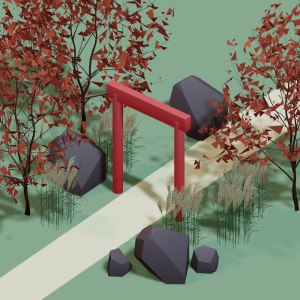 All training, tips and articles
All training, tips and articles
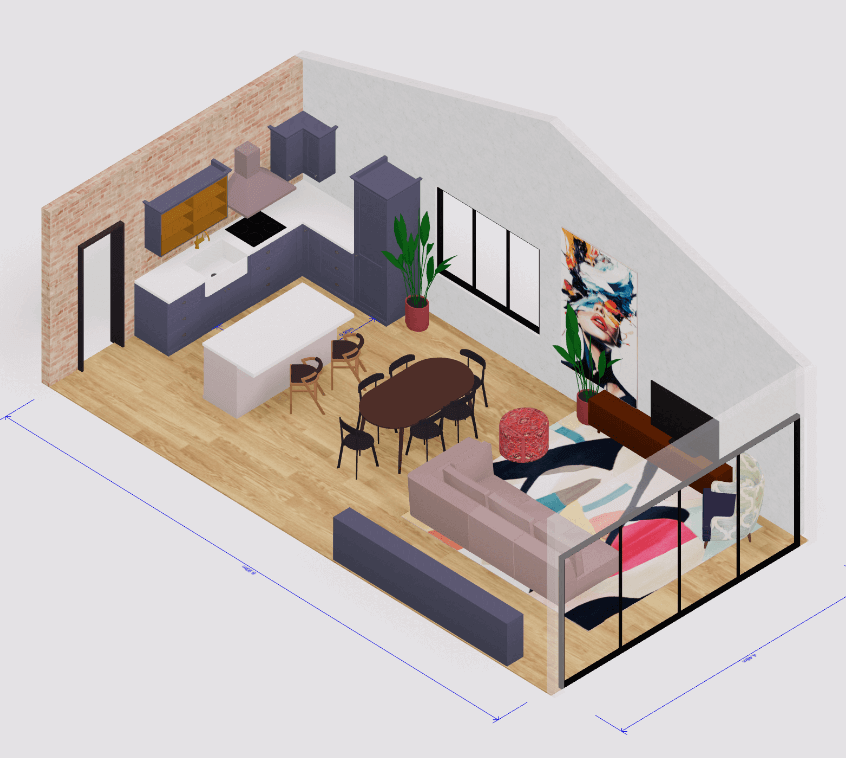 3D house design tool
3D house design tool
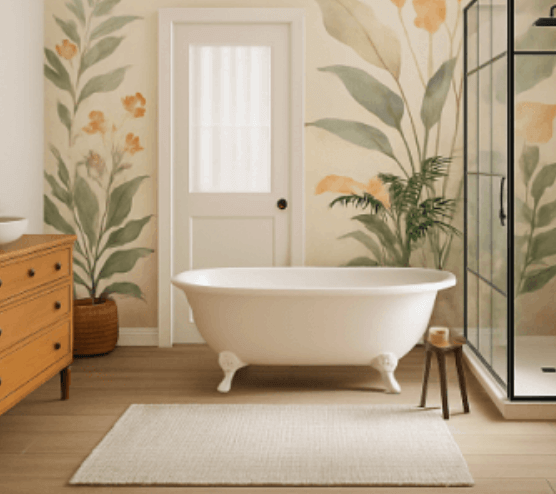
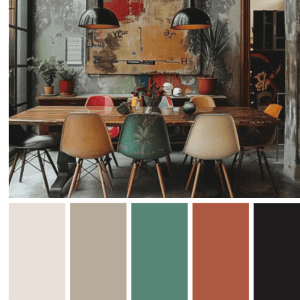 Color palette generator
Color palette generator
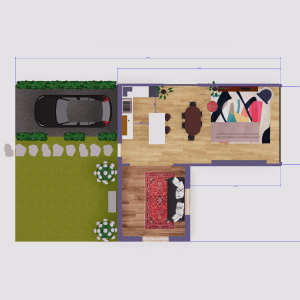 Floor plan creator
Floor plan creator
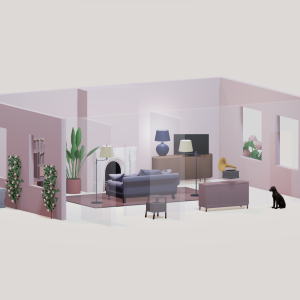 Interior design app
Interior design app
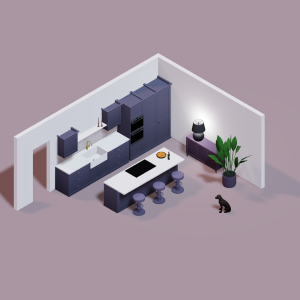 Kitchen design tool
Kitchen design tool
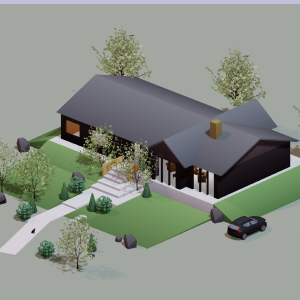 House design software
House design software
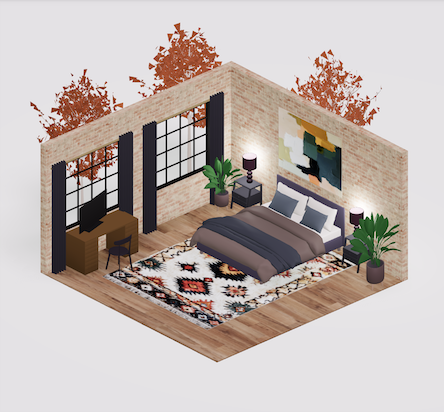 Room designer
Room designer
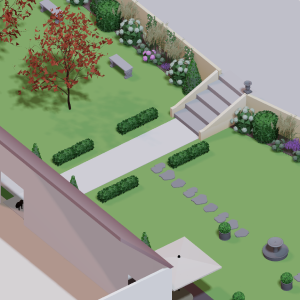 Landscape design software
Landscape design software
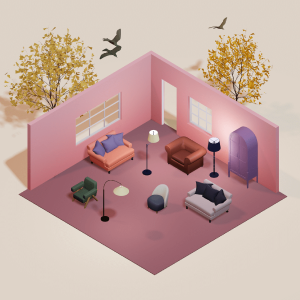 Bedroom design
Bedroom design
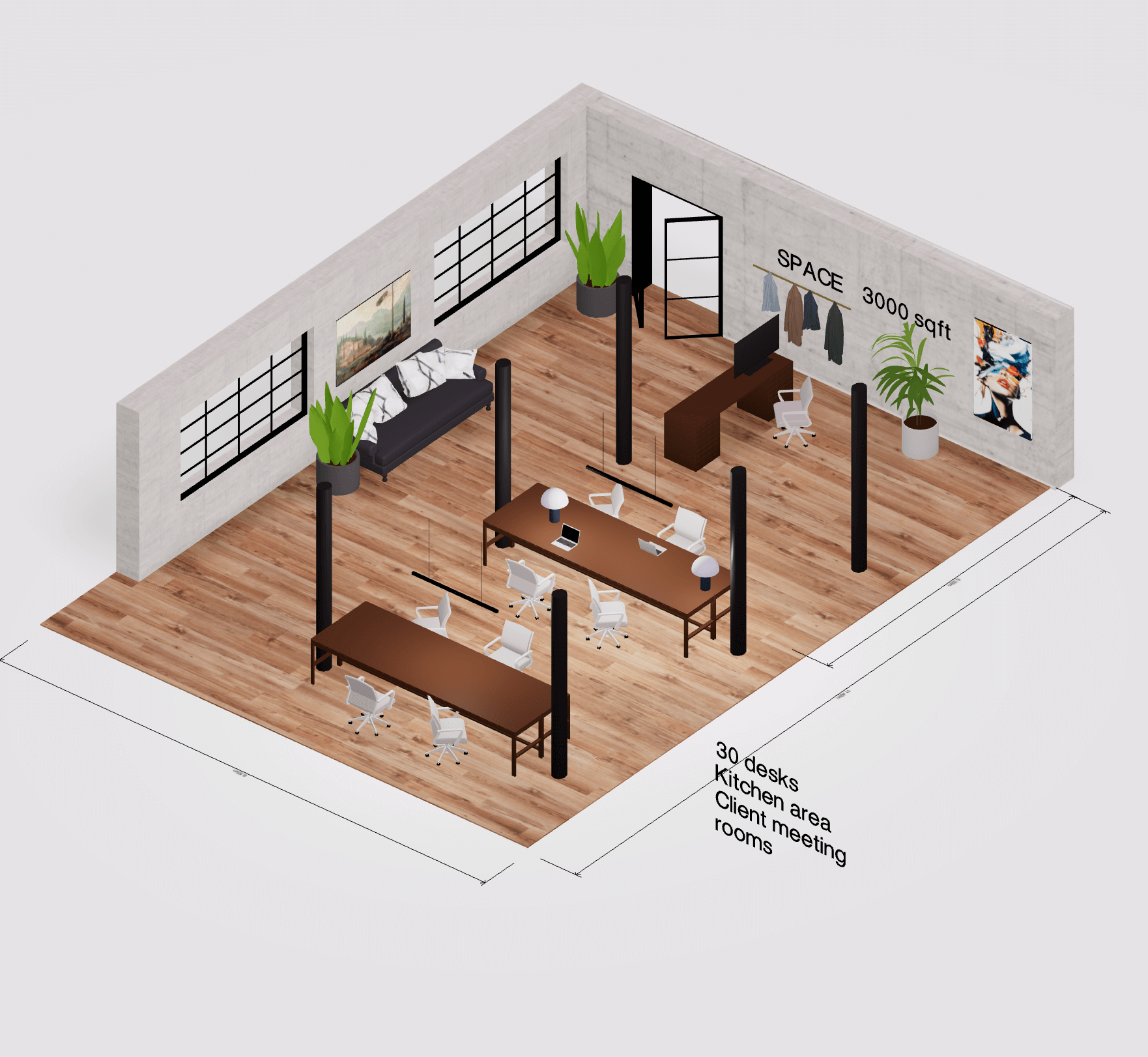 Office floor plan creator
Office floor plan creator
